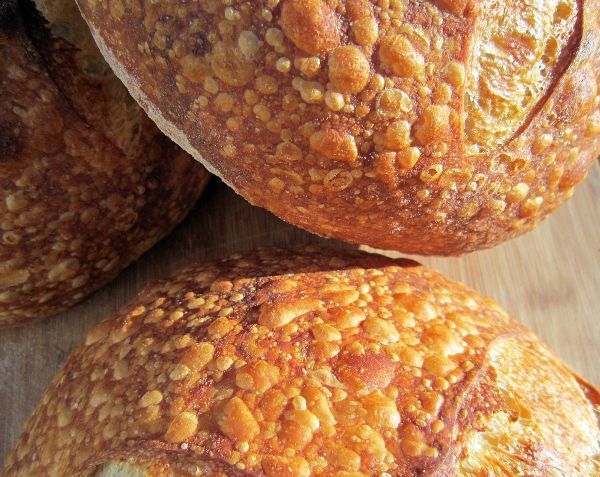When you see a loaf of sourdough bread with tiny, golden, blistered bubbles across its crust, you know it’s something special. Those blisters don’t just look beautiful—they add a deliciously nutty, caramelized flavor and a satisfying crunch that sets artisan loaves apart.
Blisters are a hallmark of well-fermented, naturally leavened bread. They form because of gases and sugars released during long fermentation, combined with high baking heat and steam. If you’ve ever wondered how to achieve this bakery-style look at home, you’ll be glad to know that the secret lies in your fermentation process and baking setup.
In this guide, we’ll cover how to get blisters on your sourdough bread, step by step, along with tips, notes, and frequently asked questions so you can bake loaves that look—and taste—like they came straight out of an artisan bakery.
How to Make Blisters on Sourdough Bread
Step-by-Step Instructions:
-
Use High Hydration Dough
-
Aim for 70–80% hydration. Higher hydration dough encourages gelatinization of starches, which contributes to blistering.
-
-
Cold Retard Overnight
-
After shaping, place your dough in the fridge for 12–24 hours. The cold fermentation enhances flavor and encourages blister formation on the crust.
-
-
Proper Steam During Baking
-
Bake in a Dutch oven or use steam in your oven during the first 20 minutes. Steam delays crust formation, allowing blisters to pop up.
-
-
Strong Gluten Development
-
Perform stretch-and-folds or coil folds during bulk fermentation to strengthen your dough so it can trap gases properly.
-
-
High Heat Bake
-
Start baking at 475–500°F (245–260°C). The intense heat caramelizes sugars, creating dark, shiny blisters.
-
Notes
-
Don’t over-proof: Over-fermented dough may collapse and won’t hold blisters.
-
Floured bannetons can help create contrast—flour dusting against blistered crust looks stunning.
-
Different flours (especially whole wheat or rye blends) can reduce blister visibility, so stick to bread flour or high-protein flour if you want dramatic blisters.
FAQs
Q: Do I need a Dutch oven to get blisters?
A: It helps because it traps steam, but you can also use a baking stone with a pan of boiling water for steam.
Q: Why didn’t my bread get blisters?
A: Likely reasons include low hydration, insufficient fermentation, lack of steam, or baking at too low of a temperature.
Q: Will blisters affect the taste?
A: Yes! They give the crust a nutty, caramelized flavor and add to the crunch.
Q: Can I still get blisters with whole wheat dough?
A: You can, but they may be less pronounced than on white bread flour doughs.
Disclaimer
This article is for informational and educational purposes only. While sourdough bread can be a healthy part of a balanced diet, it should be eaten in moderation. Always check ingredients if you have allergies (gluten, wheat, etc.).

Leave a Comment